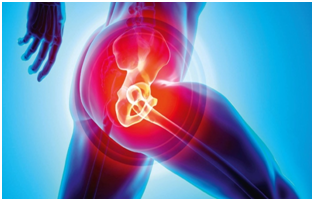 Hip Pain can have many causes - age related changes, falling, injury, or through repetitive activities. As it is a large joint and area of the body, the pain can be quite debilitating and affect your daily activities.
Hip Pain can have many causes - age related changes, falling, injury, or through repetitive activities. As it is a large joint and area of the body, the pain can be quite debilitating and affect your daily activities.
Depending on what is causing your hip pain, you might feel the discomfort in your:
- thigh
- hip joint
- groin
- buttock
Sometimes pain from other areas of the body, such as the back or groin can radiate to the hip.
It is very important to keep joints moving, even when you're dealing with pain from age related changes or an overuse injury. These Hip Pain Exercises can help with moving and strengthening your hip.
If your pain does not settle in 6-12 weeks, you may need to seek further advice and can refer to physiotherapy through the self referral method.
It is important to contact your medical practice if:
- Your hip pain came on following a fall or trauma.
- You are unable to weight bear through your affected leg.
Greater Trochanteric Pain Syndrome
What is GTPS?
GTPS is a painful condition affecting the outer thigh and hip area. It happens when the tissues over the bony prominence (greater trochanter) at the top of your thigh bone become irritated. These can include tendons, muscle or bursae (fluid-filled sacs that help smooth movement between muscles, tendons and the hip bone).
What are the symptoms of GTPS?
- Pain on your outer thigh and hip area. This may feel like an aching or burning pain.
- Pain when you lie on your side, especially at night.
- Can become worse with exercise and you may find you limp when you walk.
You don’t normally need a scan to diagnose this problem and a health care professional willmake a diagnosis from a history and specific tests.
This leaflet provides further information into GTPS and the exercises that may help.
Hip Osteoarthritis
What is Osteoarthritis (OA)?
Osteoarthritis (OA) is a condition that affects the joints causing pain and stiffness. The hip is one of the most commonly affected joints. Osteoarthritis is sometimes called ‘degenerative joint disease’ or ‘wear and tear’.
What happens in osteoarthritis?
Normal joints are constantly undergoing repair because of wear and tear. However, in some people, it seems that this repair process becomes faulty and OA develops. A certain amount of wear and tear is normal as we age.
What are the symptoms of Hip Osteoarthritis?
• Pain, stiffness and difficulty with movements of the joint are typical. The stiffness tends to be worse first thing in the morning but tends to loosen up after an hour or so.
• Pain, stiffness and weakness around the hips can lead to problems walking, putting on shoes and socks and activities such as getting in or out of the car. Eventually it can disturb your sleep.
• A locking or cracking sensation around your hip is fairly common.
You may experience all or some of these symptoms. Your symptoms may vary for no apparent reason with bad spells lasting a few weeks or months broken by better periods.
This leaflet, provided by our Orthopaedic Department, contains more information about Hip OA and the exercises that can help.